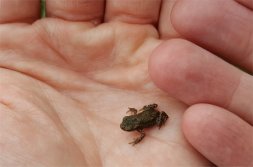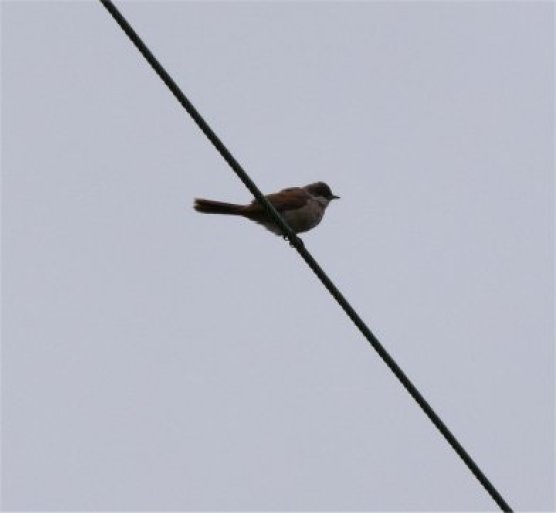 It’s the last full week of the Wildlife Trust’s, 30 Days Wild. How fast has June flown?! Though it’s been a challenge this year. However, I think I’ve managed to make my week four, wild with diverse activities.
It’s the last full week of the Wildlife Trust’s, 30 Days Wild. How fast has June flown?! Though it’s been a challenge this year. However, I think I’ve managed to make my week four, wild with diverse activities.
If, like me you are looking for inspiration on where to visit, why not try the Wildlife Trusts’ Nature Finder app? With over 2000 nature reserves it’s a helpful aid to search for the wild!
Day Twenty-two: Thursday.
Plantlife have launched The Great British Wildflower Hunt. Their aim is to help more people identify wildflowers. They have downloadable identification sheets with helpful pictures and information on 20 popular wildflowers. You can do two counts. One in the city and the other in the countryside. I opted for the city. I was able to count a very respectable 13/20, though there is still a lot more I could learn about wildflowers.
Have you joined in this count? What were your highlights?
Day Twenty-three: Friday.
A week ago I planted some of my accumulation of freebie wildflower seeds. One pack I received with my 30 Days Wild mailing, the other I requested via Nestle Cereals. In just seven days my seeds have sprouted into seedlings. Hopefully they will flower come August!

Seedlings
Day Twenty-four: Saturday.
Today as we were visiting local pet shops I decided to visit a nature reserve we drive past every-time we travel from Liverpool to St. Helens. Stanley Bank is a nature reserve with an easy 1 mile walk. It’s part of the larger Sankey Valley Country Park. On a rather grey day there wasn’t many insects on the wing. There were however lots of wildflowers gracing the path as we followed a stream, watching a pied wagtail flit from bank to bank. There were lots of bird song from the canopy of trees above our heads. I could identify a blackbird, blue and great tits and wood pigeons. Here’s a few pictures I took of our short woodland walk.
Day Twenty-five: Sunday.
The plan for today was to visit Lunt Meadows Nature Reserve near Crosby. I had planned the weekend around the weather forecast which said that Saturday was to be drizzly and Sunday just a grey day. However Saturday’s visit to St. Helens remained rainless while waking up on Sunday the rain fell like rods. Feeling a little miffed to say the least, I dawdled breakfast and then left for Lunt at 10am, when thankfully the rain started to ease up.
Only 40 minutes drive from Liverpool, Lunt Meadows is 77ha of land along the River Alt. It is a relatively new reserve being only opened to the public since 2015. The habitats include wetland and fens. During our visit we only saw a handful of other walkers, mainly with their dogs. David and I took a leisurely three hours to walk around the reserve.
During excavations of Lunt Meadows archaeologists discovered a rare Mesolithic settlement by a group of nomadic stone-age hunter gatherers who lived in the area 8,000 years ago. It made me think of what their life must have been like and what they would think of the area today. If you are interested in what the archaeologists found, you can read more here.
While walking along the River Alt, we enjoyed watching swifts swoop past us. It made me feel dizzy watching them as they skimmed over the water. I later read that they live their life of the wing, even sleeping whilst flying! Butterflies we had disturbed fluttered before us. I was excited to see my first sighting of a large skipper! The air was filled with the chatter of warblers and the hum of bees. At one stage even small toads hopped across our path. We managed to pick one up and its padded feet felt cold and wet. Here’s just a small selection of pictures David and I took of our wonderful visit.
We will definitely visit Lunt Meadows again, hopefully in better weather!
Where is your favourite nature reserve?
Day Twenty-six: Monday.
Inspired by a photo featured on Thomas Heaton’s photography YouTube by Cora Iwanowsky, David set out in search of a garden snail to photograph. He searched our yarden, under overhanging plants and behind pots. After selecting the right model, he gathered stones from our fireplace and placed them in our fountain. He then positioned the model at the pinnacle of the display. He quickly took some photographs before putting the snail back in the yarden, none the wiser of what had just occurred. Here’s David’s attempt.

Snail on Stone by David Evans
David’s antics got me thinking about garden snails and that I knew nothing about them. So here’s a few facts about these abundant garden friend or foe.
- Are classed as a terrestrial gastropod mollusk.
- Are native to Europe.
- Have a flat “muscular foot” that helps them move, aided by the release of mucus to reduce friction (hence snail trails).
- Feasts on plant matter and debris.
- Has nocturnal habits and rests during the day.
- During hot periods they can retract into their shell and seal it shut, this induces a hibernation state and they can remain like this for several months.
- Most hibernate during the winter.
- Their fastest speed is only 1.3 centimeters per second.
- They are hermaphrodite (both male and female) but need another snail for sperm transfer.
- Can lay up to 100 eggs and up to six batches a year.
- Are a food in France and Spain.
Who would have thought the common garden snail could be so fascinating! Their induced hibernation amazed me!
Day Twenty-seven: Tuesday.

The RSPB’s Wild Challenge, is an initiative to get children and families that little bit more wild. I think it is a great resource once 30 Days Wild has ended. There are three levels of challenges, bronze, silver and gold, with a list of activities to achieve before each level is reached and a certificate awarded. Having a wild sleep-out, learning about moths and going on a bug safari are some of the activities you can participate in.
Have you signed up for this challenge? What are your thoughts on the initiative?
Day Twenty-eight: Wednesday.
As we were visiting family this evening and didn’t have much time available for anything too wild! David and I decided to take Riley to Newsham Park. Riley having not been to this park before, was excited at all the new smells. He even chased and barked at the congregating seagulls. Indeed it was weather for seagulls as it had been raining all day. The field we let Riley run free was sodden with water and soon Riley and our feet were soaked too! The park boasts two lakes, a band stand and Newsham House which Queen Victoria visited during her reign. However, all we managed to visit on this dreary evening was the gardens.
Summary:
Even though the weather was unsettled this week, we did manage to see lots of wildlife. Highlights for me was visiting Lunt Meadows Nature Reserve and seeing that my wildflower seeds have sprouted.
What random acts of wildness have you enjoyed doing this week?
A Look Back:
2015: Passion Flowers and a trip to Norwich
2016: Moth sighting and no tech day
Thanks for dropping by,
Christine x























Great post. Lunt Nature Reserve looks a great wildlife spot! I’m hoping to go to Salthill Quarry Nature Reserve which is Clitheroe, on Friday. I went there 2 years ago for 30 Days Wild too, but not to worry. I think the tall pink flowers in your post are called Rosebay Willowherb. X
LikeLiked by 1 person
Thanks for the flower ID. 🙂 Yes, Lunt Nature Reserve was wonderful. We saw so much wildlife and even on a gloomy day. Hope to visit some more nature reserves now I know there are a few by me. Enjoy Salthill! xx
LikeLike
Some wonderful places to visit. I have really enjoyed taking part.
LikeLiked by 1 person
I’ve enjoyed it too. It makes you ferl closer to nature and appreciate it more 😀
LikeLike
I liked all of this, but my favourite part was your Lunt photos – brilliant!
LikeLiked by 1 person
Lunt was wonderful 🙂 Thanks Anabel x
LikeLiked by 1 person
What a brilliant week that was! Lunt Meadows sound like a lovely place to visit! I’ve really enjoyed watching swifts over the garden at my new house over the last few weeks – we don’t really get them where we live now (haven’t moved yet!) so it’s a novelty at the moment!
LikeLike
Pingback: My Wildlife Moments of 2017 | Christine Lucas
Pingback: Sunday Sevens #50 | Christine Lucas